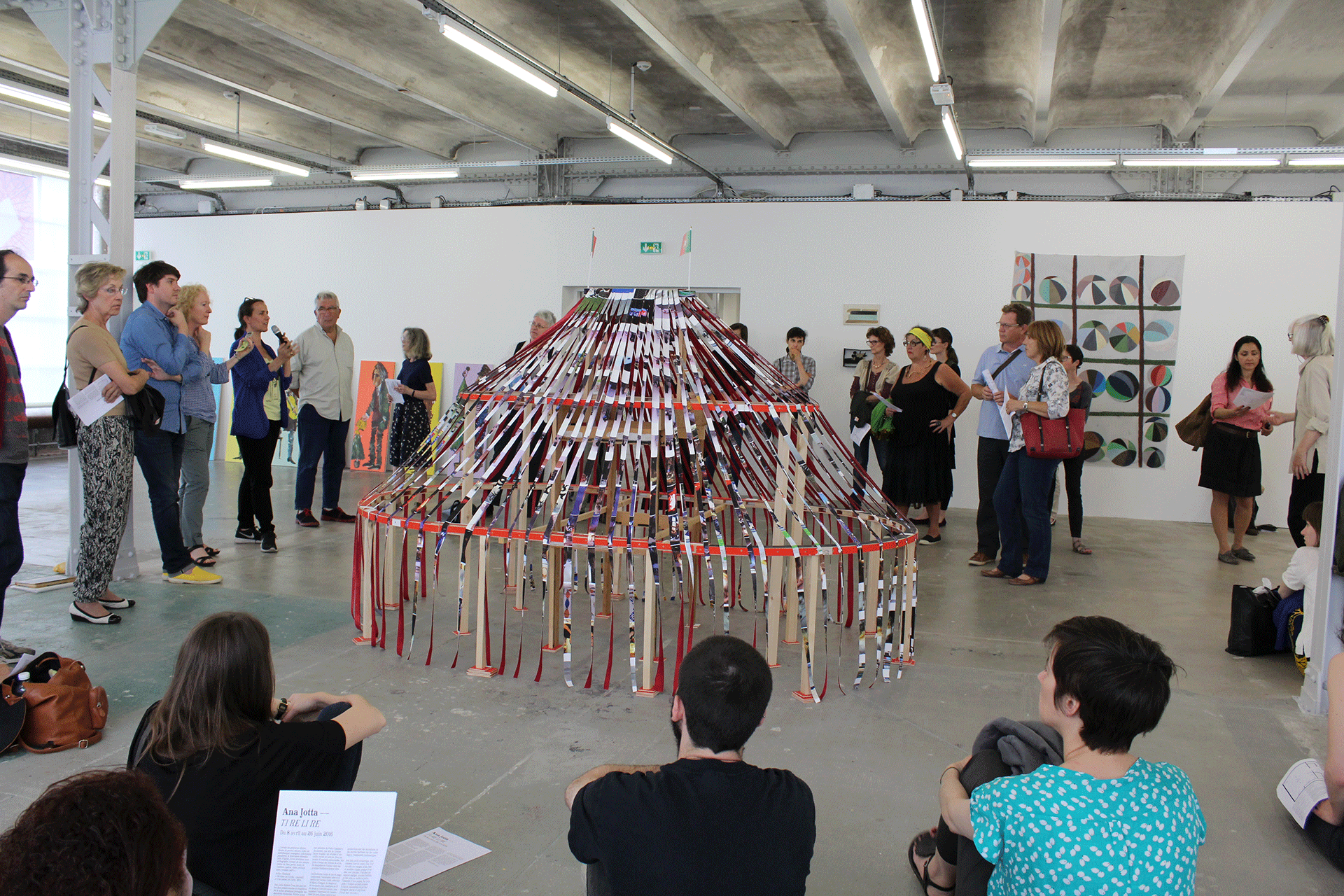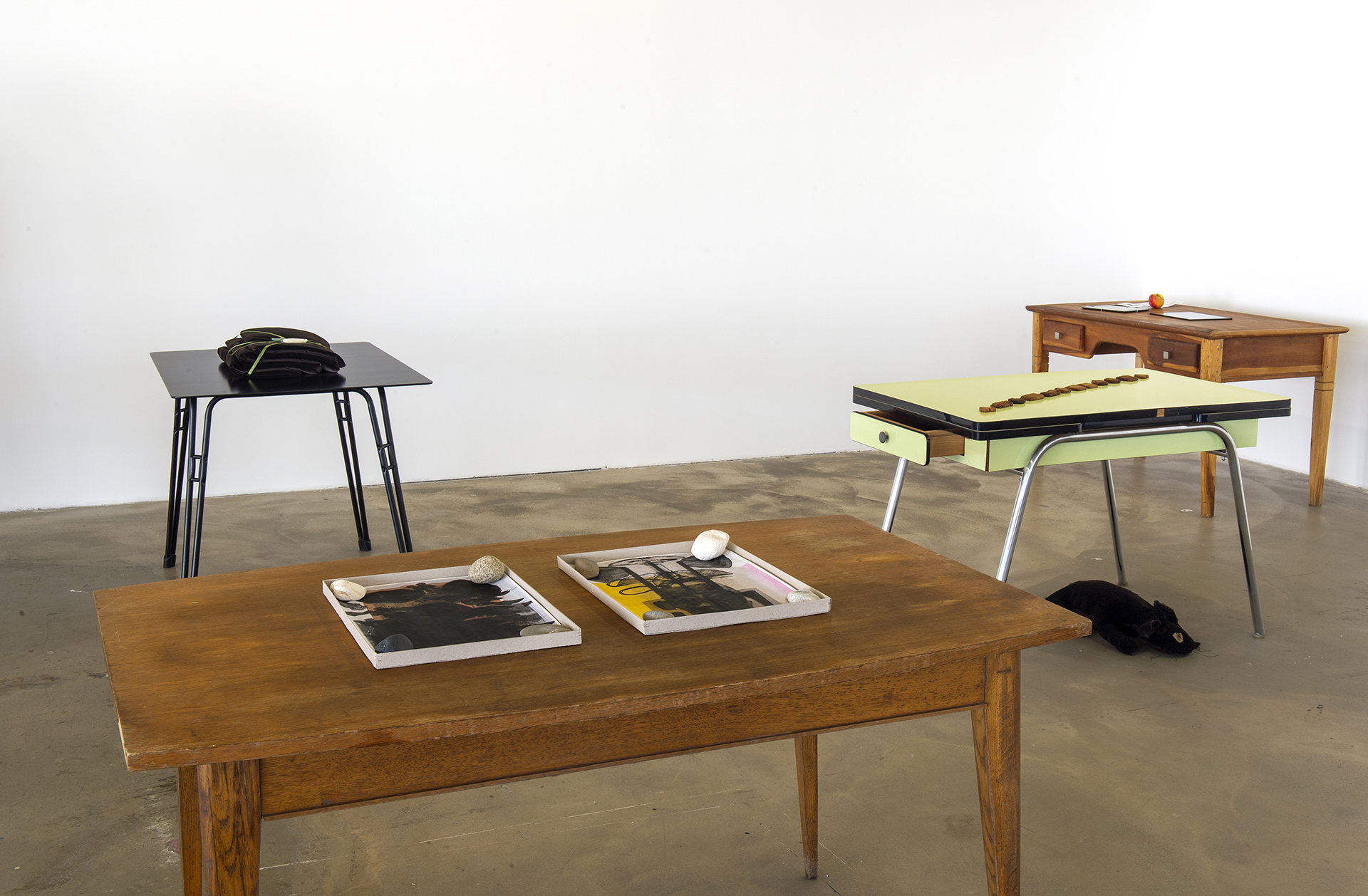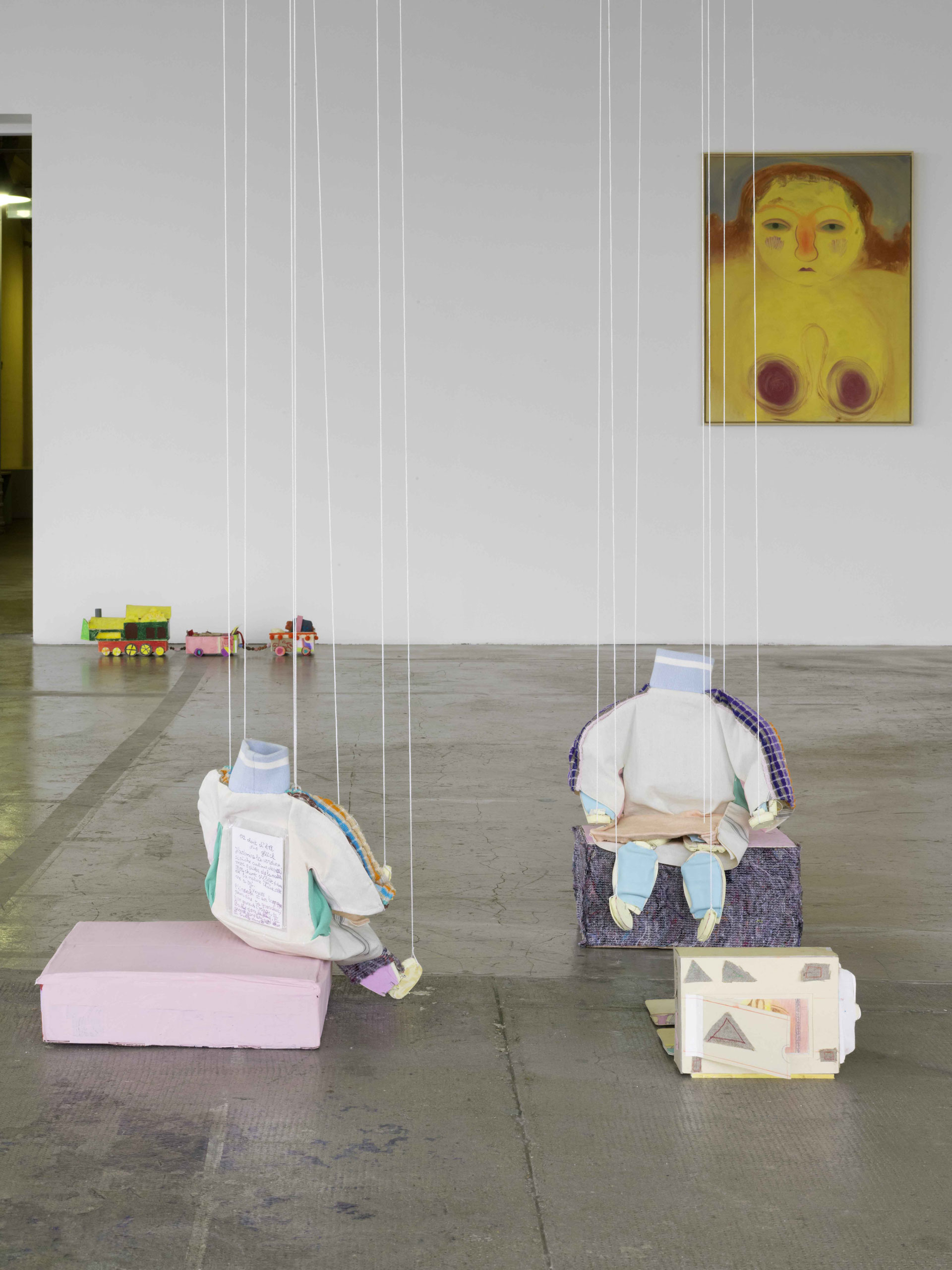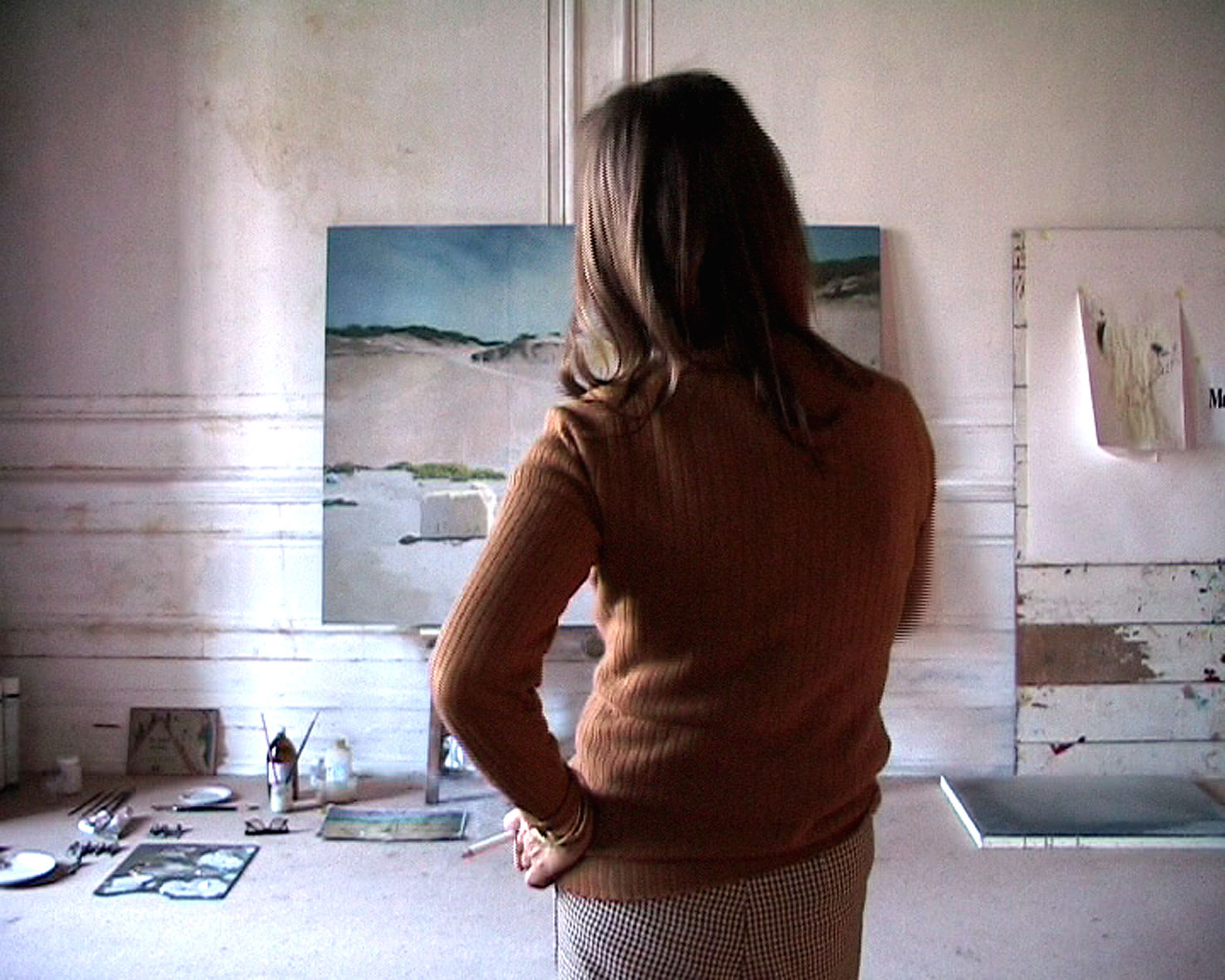TI RE LI RE
Ana Jotta

Foreground: Casa, 2016, printed tarp (signage for the exhibition A Conclusão da Precedente, 2014), fabric, wooden structure. Background: Untitled, 2016. Collection of printed works on fabric. Courtesy of the artist and ProjecteSD, Barcelona. © Photo : André Morin / le Crédac.

Exhibition view. © Photo : André Morin / le Crédac.

Exhibition view. © Photo : André Morin / le Crédac.

Exhibition view. © Photo : André Morin / le Crédac.

Foreground: Genealogical tree, n.d., plastic lamp and wood, shield of Portugal’s universal exhibition (1940), painting by Pedro Casqueiro, ceramics and fabric wreath, Coleção da Caixa Geral de Depósitos, Lisbon. Background: Cassandra II, 2016, Wallpaper printed from the book Footnotes, after the exhibition A Conclusão da Precedente at Culturgest, Lisbon, 2014. Courtesy of the artist. © Photo : André Morin / le Crédac.

Ana Jotta, Cassandra II, 2016, Wallpaper printed from the book Footnotes, after the exhibition A Conclusão da Precedente at Culturgest, Lisbon, 2014. Courtesy of the artist. © Photo : André Morin / le Crédac.

Foreground: Jotas, 2010-2013, Collection du Fonds régional d’art contemporain Île-de-France. Background: Cassandra II, 2016, Wallpaper printed from the book Footnotes, after the exhibition A Conclusão da Precedente at Culturgest, Lisbon, 2014. Courtesy of the artist. © Photo : André Morin / le Crédac.

Exhibition view. © Photo : André Morin / le Crédac.








“I loved idiotic pictures, overdoors, stage scenery, montebanks’ backcloths, inn signs, popular prints; unfashionable literature, Church Latin, erotic books with no sense of spelling, novels of grandmother’s day, fairy tales, little books from childhood, old operas, silly refrains, naïve rhythms.”
Arthur Rimbaud “Alchemy of thhe World” (excerpt) in A Season in Hell, 1873.
Ana Jotta has been elaborating one of the most exciting and singular bodies of work on Portugal’s art scene of the past few decades. While she mostly works as a painter, she also collects and gleans all sorts of things, injecting new life into the objects, writings and finds of others as well as her own. Making is the perennial watchword in the development of her work, which is as modest and spare as it is copious.
A Portuguese daily recently published a long profile of her entitled “Story of a Cat without a Master.” Indeed, Ana Jotta has no taste for what is dominant, classified, or ordered by anyone other than herself. Obeying only her own orchestration, she follows her many paths, routes and circles. She readily defines herself as irrational and fond of the unclassifiable, the inexhaustible, the immoral.
In the gallery devoted to the Js, the totemic sculpture called Genealogic Tree (undated) is characteristic of her practice. Suggesting a living room lamp, the assemblage brings together light (artificial and filtered through a plastic bucket that has been repurposed as a lampshade), a shield from the parades that took place during the 1940 World’s Fair in Portugal, and a painting by Pedro Casqueiro. Crowning the whole, the head of a dog trophy-like sports a royal headdress of ermine. Beneath the finery of a personal coat of arms, the artist is having fun with the notions of style, discipline, and the individual creator in a practice that is fundamentally free.
Footnotes forms an inexhaustible reserve and matrix for the artist. This collection of objects, images, drawings, and souvenirs has taken shape over the years and continues to grow, reminding us of the importance of amateurism (with its roots in amare, to love) and its attachment to the “minor” arts. Conserved in her home, the series resembles a retrospective show of her life (consider Petit cirque [Little Circus], which contains a year’s worth of images shot with her mobile phone). The elements making up footnotes were carefully selected by the artist initially for the exhibition A Conclusão da Precedente at Lisbon’s Culturgest in 2014. Photographed for the occasion, they gave rise to a book, which in turn generated wallpaper. This sort of Wunderkammer, or cabinet of curiosities, the forerunner of the modern museum, mirrors both Ana Jotta’s working process and her art, which, like her own body, is in constant motion.
Each show is in effect a chance to read and reread her output, a chance to come up with a new way of displaying it. There is no distinction then between her art and how it is shown and arranged. It is often through lighter, transportable, even perishable arrangements that her works by turns vanish and reappear. Her most recent pieces are substitutes for the artworks remaining in the studio and printed on light, sheer, ghostly pieces of cloth.
Ana Jotta calls herself eccentric, that is, literally outside the center. She lives and works on the margins, where frail, sensitive things, things that are almost invisible, are ejected. It is in those neglected, yet familiar, spaces that she finds her material, pointing up the essential details. Regarding them, she speaks of “exclusive objects that are peculiar to each of us, liable to have a life of their own through their oddity, charm and antiform.”
Claire Le Restif
Video(s)
Exhibition film directed by Bruno Bellec. © Le Crédac, 2016.
Artist biography
-
Ana Jotta was born in 1946 in Lisbon, where she currently lives and works. She studied art at Lisbon’s School of Fine Arts (1965-68) and Brussels’ School of Architecture and Visual Arts of the Abbaye de la Cambre (1969-73), before embracing a career in acting and writing for the stage and cinema in the 1970s. It was in the 1980s that she began to focus on the visual arts. She has been the subject of a retrospective show at the Museu de Serralves, Porto (2005), and solo shows at Culturgest, Lisbon (2016, 2012), 8 rue Saint- Bon (2015), and Level One, gb agency, Paris (2013).
Events & meetings
Partnerships
With works from : Coleção da Caixa Geral de Depósitos, Lisbonne / Fundação Calouste Gulbenkian, Lisbonne / Fundação EDP, Lisbonne / Fundação de Serralves - Museu de Arte Contemporânea, Porto / Collection du Fonds régional d’art contemporain Île-de-France.
With the generous support of Camões - Instituto da Cooperação e da Língua, Portugal.
Media partnership : Cura., Slash/
Sponsoring for the opening : Grolsch



